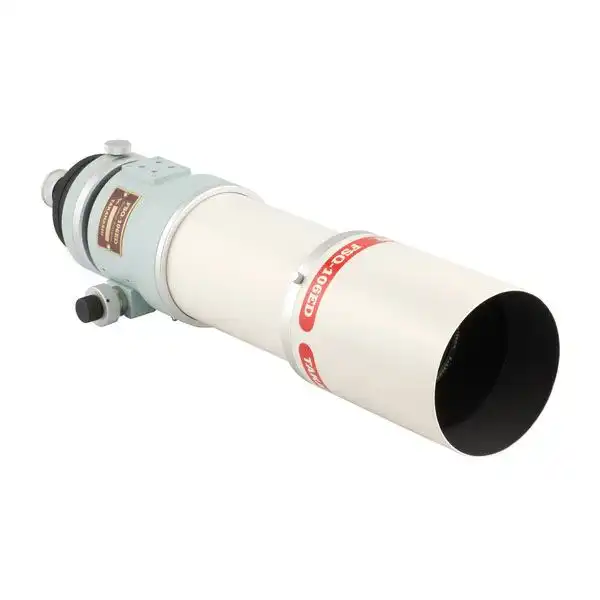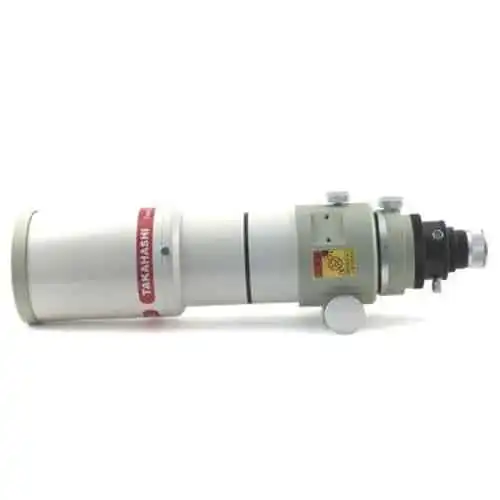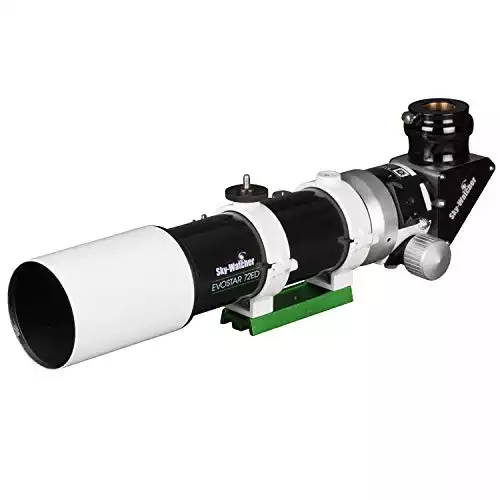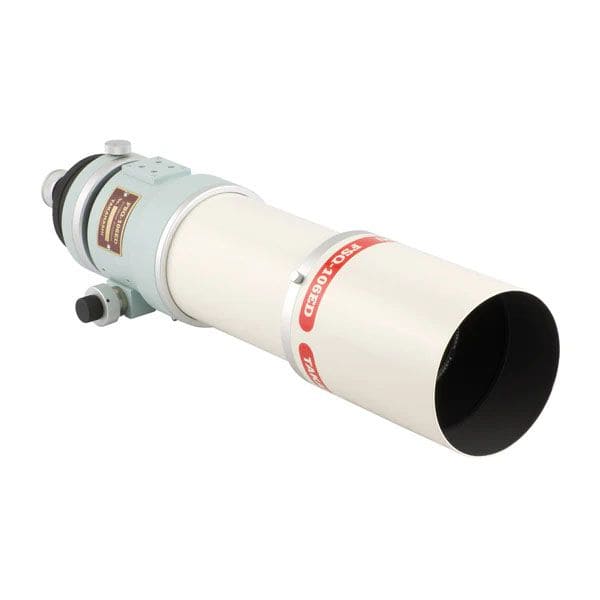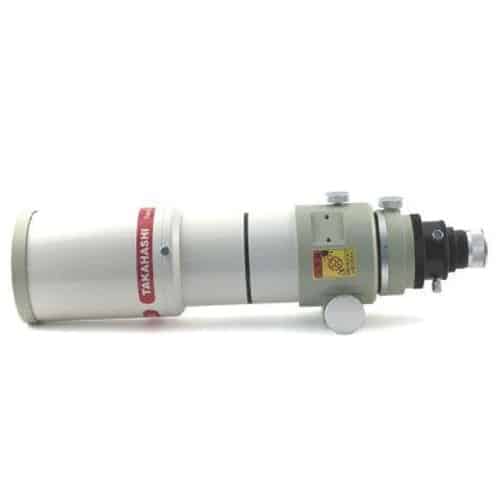We analyzed 685 images shortlisted for the Astronomy Photographer of the Year competition in the past five years to see what telescopes were used.
We found that apochromatic refractors are the most successful telescope type for astrophotography.
See the top models below or read on the full results of our data analysis.
|
Aperture:
4 inch (102 mm)
|
Aperture:
3.3 inch (85 mm)
|
Aperture:
2.8 inch (72 mm)
|
|
Focal Length:
530 mm
|
Focal Length:
450 mm
|
Focal Length:
420 mm
|
|
Focal Ratio:
F/5
|
Focal Ratio:
F/5.3
|
Focal Ratio:
F/5.9
|
Best APOs: Data Analysis
We analyzed all 685 images shortlisted for the Astronomy Photographer of the Year competition for the past five years (2018 to 2022) to see what telescopes and other gear were used.
Of these 685 images, 121 were taken using apochromatic refractor telescopes.
Apochromatic refractors vs other telescope types
Firstly, we can see that apochromatic refractors are by some distance the most successfully used telescope type in the competition:
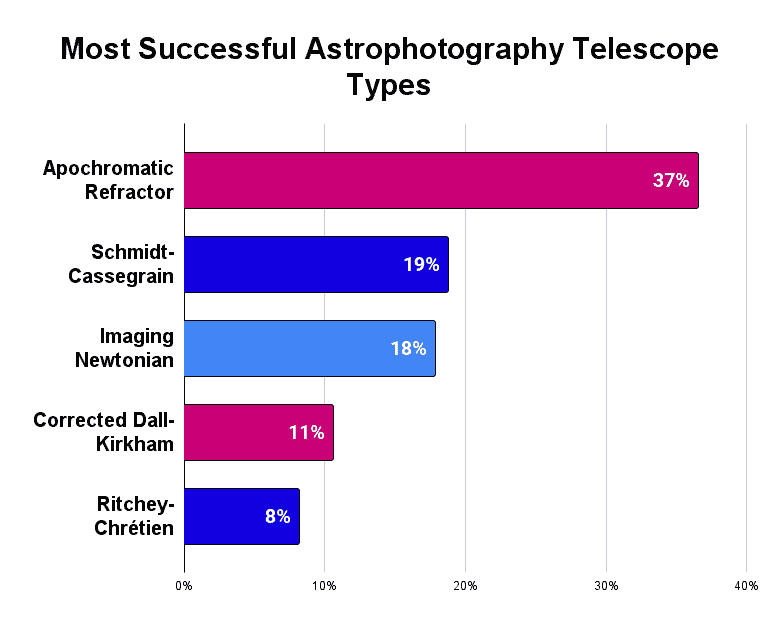
This is particularly so for deep-sky imaging, where apochromatic refractors have an even greater share.
The second most successful telescope type – Schmidt-Cassegrains – are the most successful for planetary imaging, where the long focal length that is a key characteristic of these telescopes lends itself particularly well to the narrow framing of planetary objects.
Apochromatic refractors can be:
- Doublets
- Triplets
- Quadruplets
- Quintuplets
- Sextuplets
This refers to the number of glass lens elements that are contained within the tube and, in general, the more lenses the sharper the images it is capable of.
The downside of this is that they get more expensive with more glass, so, in general, doublets are the cheapest and sextuplets the most expensive.
Our results show that in the competition, the apochromatic refractors most commonly used are triplets:
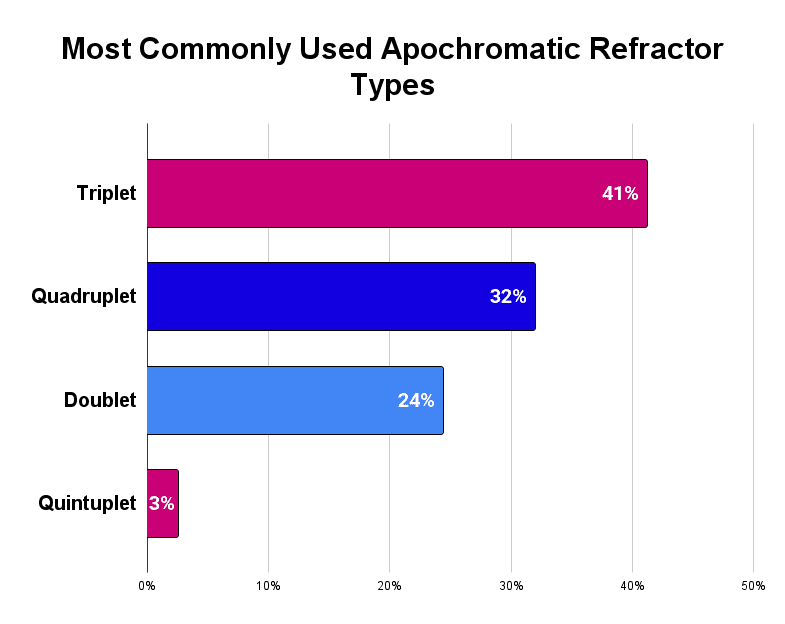
This likely reflects the balance of affordability to performance. Where doublets are cheaper and therefore more accessible, but less able to produce images of the level of triplets which cost more.
In turn, the triplet apos are more accessible than the quadruplets, etc.
Apochromatic Refractor Brands
If we look at the manufacturers of apochromatic refractor telescopes, we see that Takahashi are the most successful, followed by Sky-Watcher, Astro-Physics, and William Optics:
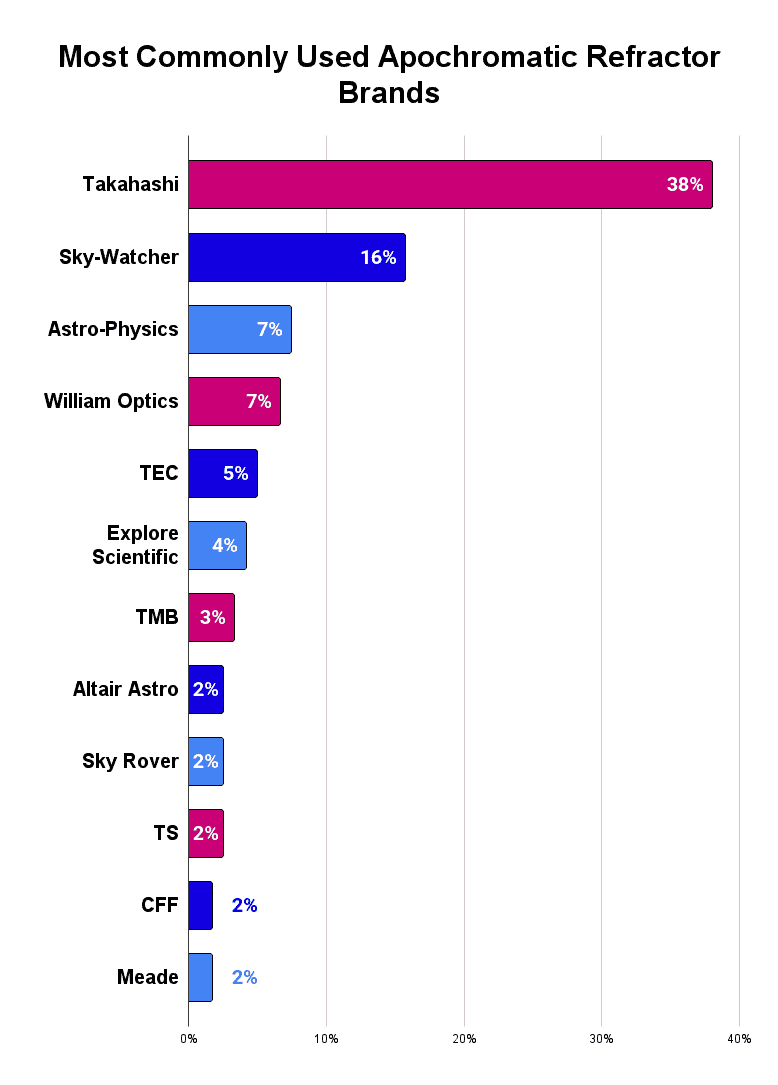
If we narrow this down to just the models used in 2022, we see that Takahashi and Sky-Watcher are still the top two but other brands like Sky Rover, Explore Scientific, and Askar are now being more commonly used:
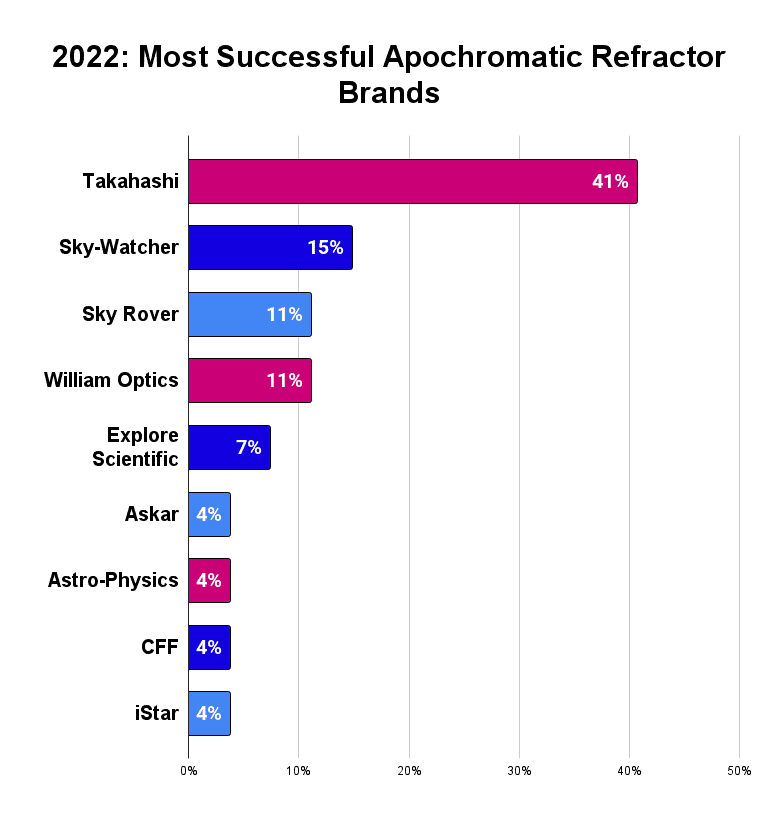
Apochromatic Refractor Models
Looking now at the individual models, there is a clear leader in the Takahashi FSQ-106.
This is a quadruplet petzval apochromatic refractor with a focal ratio of f/5.
Quadruplet Petzval Refractor Telescope for Astrophotography Imaging
- Most successful telescope for astrophotography in the Astronomy Photographer of the Year Competition
- Flat field advanced Petzval quadruplet lens system with extra-low dispersion (ED) glass
In second place is the Takahashi FSQ-85EDX. This is also a quadruplet petzval apochromatic refractor.
It has an 85mm aperture, 450mm focal length, and a focal ratio of f/5.3.
Quadruplet Petzval Apochromatic Refractor Telescope
- 85mm aperture / 450mm focal length / f/5.3 focal ratio
- Perfect for wide-field deep sky imaging
- Weighs just 8 lbs
- Small & compact for travel
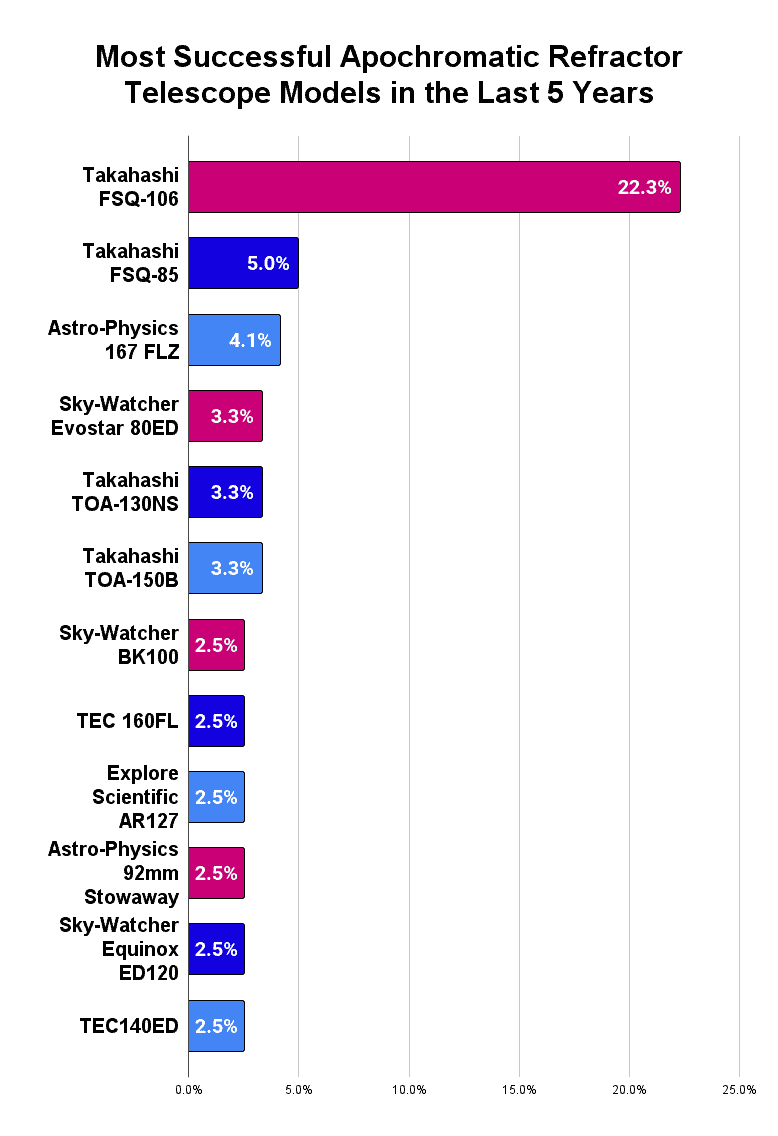
Looking now at which models were used just in 2022 there is a slightly different mix although the Takahashi FSQ-106 remains number one:
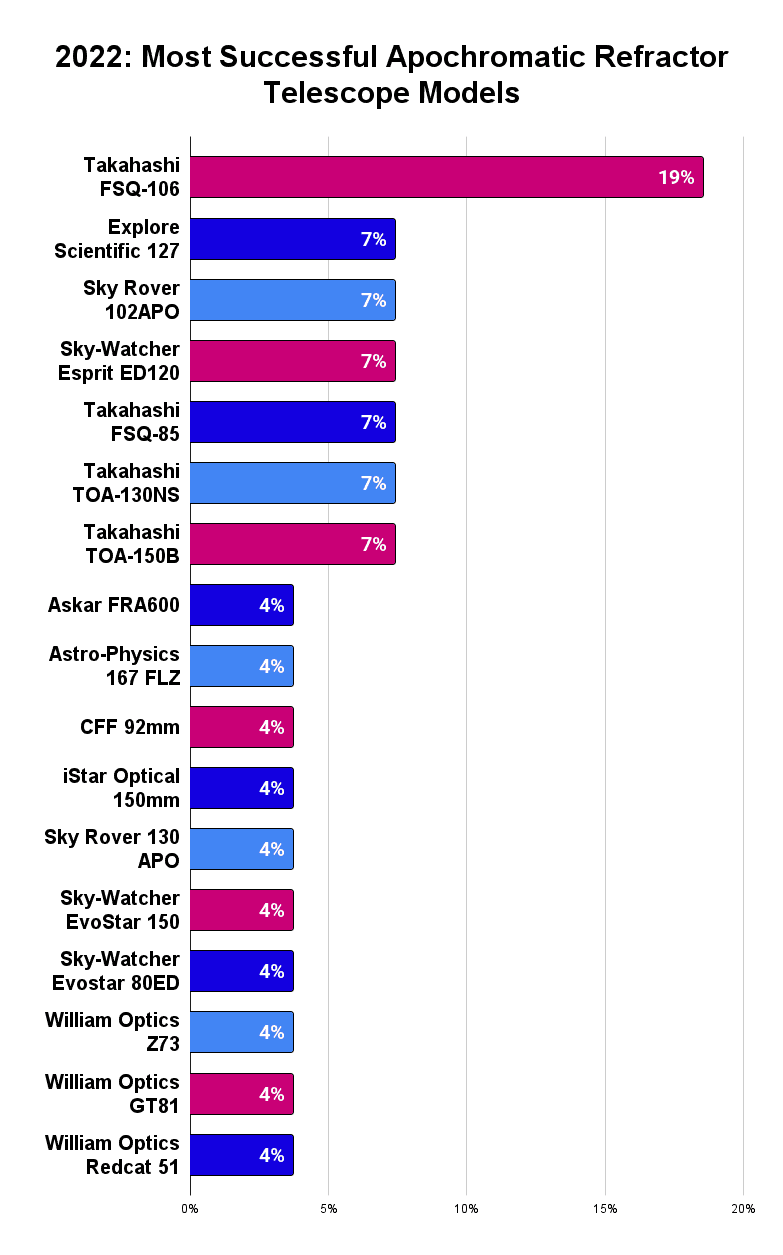
FAQs: Apochromatic Refractor Telescopes
What are apochromatic refractor telescopes?
Apochromatic refractors are telescopes that are optimized for astrophotography by correcting the chromatic aberration that occurs with regular refractors.
Chromatic aberration is where a colored fringe appears around bright objects.
They are also known as “Apochromats” or just “APOs”.
What is the difference between achromatic and apochromatic?
Apochromatic refractors correct chromatic aberration by focussing three colors of light together.
They are more expensive and work especially well for astrophotography.
Achromatic refractors suffer from chromatic aberration as they do not focus the different light colors together in the same way.
They are cheaper but not as good for astrophotography.
What is the difference between a doublet and a triplet refractor?
Apochromatic refractors can be:
- Doublet – two lenses
- Triplet – three lenses
- Quadruplet – four lenses
- Quintuplet – five lenses
- Sextuplet – six lenses
Generally, the more lenses, the sharper the image will be, but also the more expensive the telescope will be (although this is not the only factor in determining the price).
What is an ED refractor?
ED refers to “extra-low dispersion” glass which is often used in the lenses of apochromatic refractors.
It is high quality and improves the imaging quality.
What is a petzval refractor?
Petzval refractors are apochromatic refractors that have at least four lens elements (i.e. quadruplets) and are designed to produce fully flat images so that no additional field flattener is needed.
What is the best mount to use with an apochromatic refractor?
Our data shows that Sky-Watcher mounts dominate for imagers with apochromatic refractors.
See the Best Mounts for Astrophotography for more on this.
What camera to use with an apochromatic refractor?
It is best to use a dedicated astronomy camera with an apochromatic refractor.
See the Best CCD and CMOS Cameras for Astrophotography for more on this.
Sky-Watcher Evostar vs Esprit vs Evolux: What’s the difference?
Sky-Watcher has three main ranges of apochromatic refractors:
- Evostar – These are doublets and are the cheapest range
- Esprit – These are triplets and are the more premium option
- Evolux – These were newly released in 2022 and (in the words of Sky-Watcher) “sit between our popular Esprit triplets and Evostar series”. They are compact doublets with two options – 62mm and 82mm.
Conclusion: What are the best apochromatic refractor telescopes?
In summary, we recommend the:
- Takahashi FSQ-106 – As the best apochromatic refractor
- Takahashi FSQ-85EDX – As a slightly smaller and more affordable alternative
- Sky-Watcher Evostar 72ED – As the budget option that is also great for travel
Please let us know if you have any questions in the comments below.


